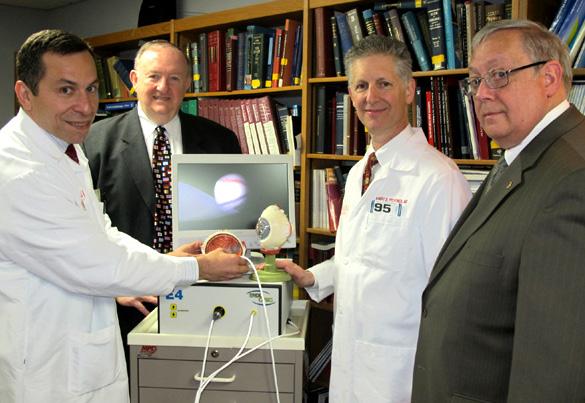
1 minute read
LIONS
These changes may be the first indication of macular degeneration, particularly if you are older than age 60.
Dr Bhagat next discussed Diabetes and the Eye. Diabetes is a systemic disease affecting many organs. The eye is the only organ with blood vessels that are readily visible to a trained provider without having to dissect or cut tissues. When damage occurs to the blood vessels in the eye, this is called diabetic retinopathy, which can cause rapid and permanent vision loss.
Advertisement
Tele-Ophthalmology Pilot Program

This is a developing program where a patient can take a photo from a camera (I-phone/Android) with no dilation and transmitted for as retina specialist to read and obtain a diagnosis. If necessary, the patient is advised to come in for an in-person examination if there appear to be any abnormalities.
Eye Trauma
The IOVS provides Ocular Trauma Service at University Hospital, Newark N.J. This includes:
• Cuts to the eye or globe
• Globe disruption / open globes
• Cerebral bleeds.
The physicians use CAT scans to diagnose and determine the problem(s). With 2100 open globe wounds in New Jersey University Hospital re - ceives the most cases in the state.
This concluded Dr. Bhagat’s presentation which included visual examples of eye trauma.
Dr Paul D. Langer presented the topic, “Computerized Planning and 3-D P in Oculoplastic Surgery.”
Reconstructive surgery is a complicated procedure whereby the surgeon needs to realign bone structure, account for missing bone structure, create implants where there is defective tissue or removed tumor(s). With 3-D orbital surgery the surgeon can manipulate bone structure virtually via a computer, perform a CT scan, and create a model which is brought onto the operating theatre. This is used to reformulate fractures and/or missing bone structure.
Dr Langer provided various examples of patients experiencing severe trauma which was corrected with customized implants created by 3-D printing. Future uses of this biomedical engineering process include placing 3-D printers in hospitals as the cost of these printers has dropped significantly since first introduced and for computerized planning for surgical processes. As these materials are inert there is no need for anti-rejection drugs.
This concluded Dr. Langer’s presentation.
PID Mel Bray thanked everyone for attending either in person and virtually and hopes to see everyone again at the 2024 version of Doctor’s Speak.
Pease note: information in this article has been taken from the following sources: Rutgers Medical School, IVOS web site, The Mayo Clinic, 3-D natives web site.










